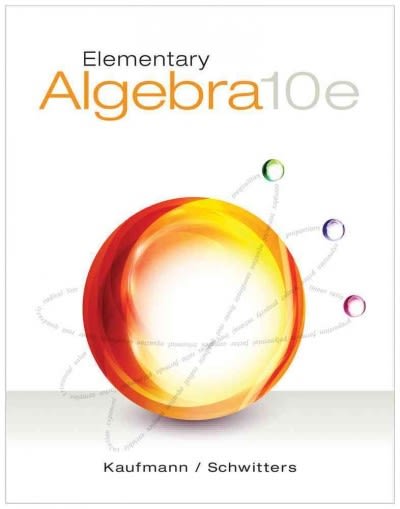Question
Q1. Determine if Course (whether or not one would take PSYC3015 if it were not required) and one's attitude towards statistics (ATTIME1- the higher the
Q1. Determine if Course (whether or not one would take PSYC3015 if it were not required) and one's attitude towards statistics (ATTIME1- the higher the score the more positive ones attitude is towards statistics) are conditional on one another?
Those with an attitude score of less than 4.68 points are consider negative those with more 5 or more point are considered positive.
Q2. Based on the 2007-08 academic year, the frequency distribution of who
predominantly paid for one's education were as follows:
26% reported 'myself'
26% reported 'my family'
42% reported 'student loans'
6% reported 'other'
Does the frequency distribution of who predominantly pays for one's education this
year (EDUC) significantly differ from the frequency distribution of that observed in
2007-08?
Q3. The median-split method was used to split SCST into 2 groups and a new variable was created in your data set called SCSTGR . Those participants with SCST ranging from -56.00 to 11.32 were place in the "Low" group and those with SCST scores ranging from 12.33 to 86.40 were placed in the "High" group.
Determine whether students who are high scoring in general resourcefulness (SCST) differ significantly in their anxiety toward statistics at time 1 (ANXIETY) in comparison to those who are low scoring in general resourcefulness. In addition to preforming and analyzing the appropriate statistical test, report and interpret both the 95% confidence interval and power.
Test the assumption of homogeneity only.
Step by Step Solution
There are 3 Steps involved in it
Step: 1

Get Instant Access to Expert-Tailored Solutions
See step-by-step solutions with expert insights and AI powered tools for academic success
Step: 2

Step: 3

Ace Your Homework with AI
Get the answers you need in no time with our AI-driven, step-by-step assistance
Get Started


